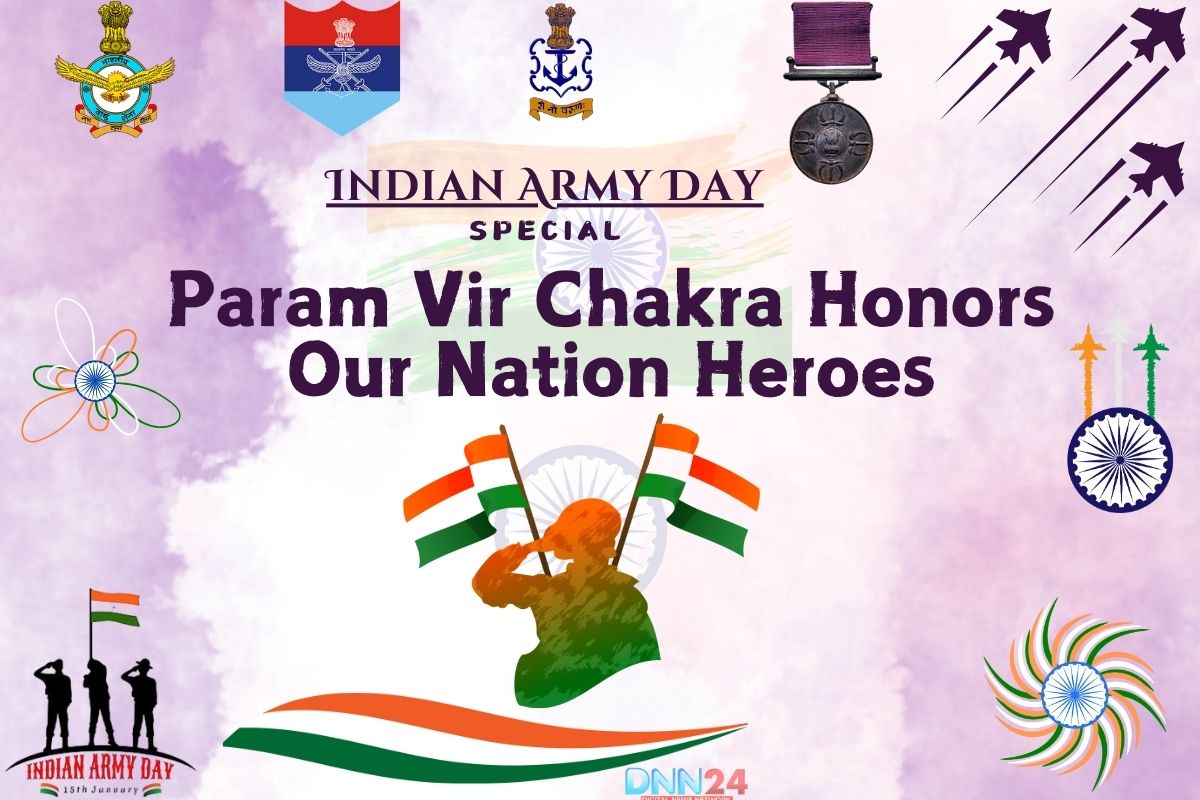The Param Vir Chakra (PVC) is India’s highest military decoration, awarded for displaying distinguished acts of valor during wartime. Instituted on January 26, 1950, the PVC celebrates courage, self-sacrifice, and heroism among the armed forces. The term “Param Vir Chakra” translates to the “Wheel of the Ultimate Brave,” reflecting the valor it honors.
The design of the Param Vir Chakra serves as a powerful symbol reflecting India’s values of bravery, sacrifice, and honor. Its elements intricately weave together aspects from mythology and history, making it not just a military decoration but also a cultural artifact that honors those who exemplify these ideals in defense of their country. Each recipient carries not only their own story but also the legacy of countless others who have embodied these principles throughout history.
Recipients of the PVC are chosen for acts of conspicuous bravery that inspire both their comrades and the nation. Over the years, 21 soldiers have been awarded this honor, with many awarded posthumously, highlighting the ultimate sacrifice involved. The PVC is more than a medal, it is an emblem of nationhood and military merit.
History of the Param Vir Chakra
Realization that an exclusive award for gallantry was required came when India became free in 1947. Thus, the Indian Armed Forces needed an honor which was on par with the other international awards like the Medal of Honor or Victoria cross. Thus, the Param Vir Chakra was born.
The first Param Vir Chakra was given after his death to Major Somnath Sharma for showing immense courage in Jammu and Kashmir operations, 1947-48. This was evident with Major Sharma’s actions that marked the anticipation of the PVC because he was exemplary among the rest in exhibiting the act of courage when confronted by a force of dangerous fire.
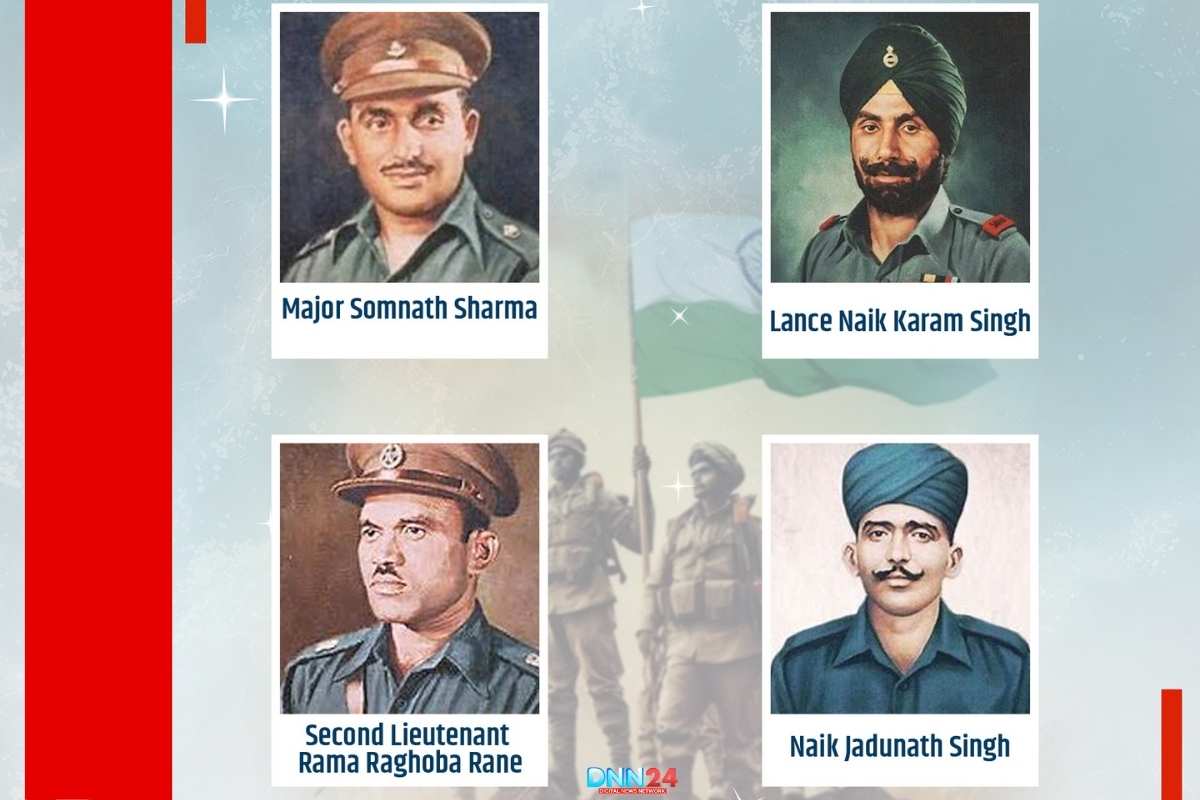
Since then, the PVC has been awarded over other bigger wars such as the two Indo- Pak wars of 1965 and 1971, Kargil war and counter terrorism operations among other wars. It means this medal has a great importance as its criteria are very selective, so only the most brilliant achievements can be awarded this medal.
The Param Vir Chakra serves as more than a medal—it is a cultural and historical artifact. It reminds every Indian of the bravery and sacrifices that safeguard the nation’s sovereignty.
Design and Symbolism of the Medal
The Param Vir Chakra (PVC) is India’s highest military decoration, awarded for conspicuous bravery and self-sacrifice in the presence of the enemy. The design and symbolism of this prestigious medal reflect profound cultural and historical significance, encapsulating the ethos of valor and sacrifice that defines the Indian Armed Forces.
Circular Shape and Material
The Param Vir Chakra is circular in shape, made of bronze, with a diameter of approximately one and three-eighth inches. This circular form symbolizes continuity and eternity, representing the unbroken spirit of bravery that transcends generations. The choice of bronze, a durable metal, signifies strength and resilience, qualities inherent in the recipients of this honor.
Central Emblem: Indra’s Vajra
At the heart of the medal lies a representation of Indra’s Vajra, a mythical weapon associated with the Hindu god Indra, symbolizing power and protection. The design features four replicas of the Vajra surrounding the national emblem of India. This element not only highlights the martial prowess but also connects to Indian mythology, where the Vajra is seen as a tool for vanquishing evil forces. The incorporation of this symbol reflects the belief that true bravery is not just about physical strength but also about moral fortitude.
The Lotus Symbol
On the reverse side of the medal, “Param Vir Chakra” is embossed in both Hindi and English, flanked by two lotus flowers. The lotus is a significant symbol in Indian culture, representing purity, enlightenment, and rebirth. This choice emphasizes that acts of valor lead to spiritual elevation and honor not just for individuals but for the nation as a whole.
Maharishi Dadhichi’s Sacrifice
One of the most profound aspects of the Param Vir Chakra’s design is its connection to Maharishi Dadhichi, a sage from Hindu mythology who sacrificed his life to create a powerful weapon for the gods. According to legend, Dadhichi willingly gave up his body so that his bones could be fashioned into Indra’s Vajra to defeat evil forces threatening the world. This narrative embodies the essence of sacrifice for a greater cause—a theme central to military valor. The four representations of Dadhichi’s bones on the medal symbolize how true strength lies in selflessness and dedication to protecting one’s homeland.
Tribute to Historical Warriors
The design also pays homage to historical figures like Chhatrapati Shivaji Maharaj, known for his strategic prowess and courageous defense against adversaries. Savitri Khanolkar, who designed the medal, aimed to incorporate elements that resonate with India’s rich martial heritage. By embedding such references within the medal’s symbolism, it serves as a reminder of India’s long standing traditions of bravery and sacrifice.
Establishment Post-Independence
The Param Vir Chakra was instituted on January 26, 1950, during India’s first Republic Day celebrations. It was created during a time when India was establishing its identity as an independent nation, moving away from colonial influences. The need for an award that could resonate with Indian values led to its design by Savitri Khanolkar, who was chosen for her deep understanding of Indian culture and history.
Major Somnath Sharma: The First Recipient
Major Somnath Sharma, the first recipient of the PVC, is an enduring symbol of bravery. Prime Minister Atal Bihari Vajpayee’s mentor and India’s most decorated soldier, he was born on January 31, 1923, in Himachal Pradesh’s village of Dungar Poon. Major Sharma with his company was in the Battle on 3rd November 1947 known as the Battle of Badgam and his company was facing the tribal invaders supported by Pakistan. He not only faced them but also initiated the battle with his troops even after the majority was against him, and had an injured arm. He did not step back which made sure that Srinagar airport was protected –something that was very vital to the future of Jammu & Kashmir.
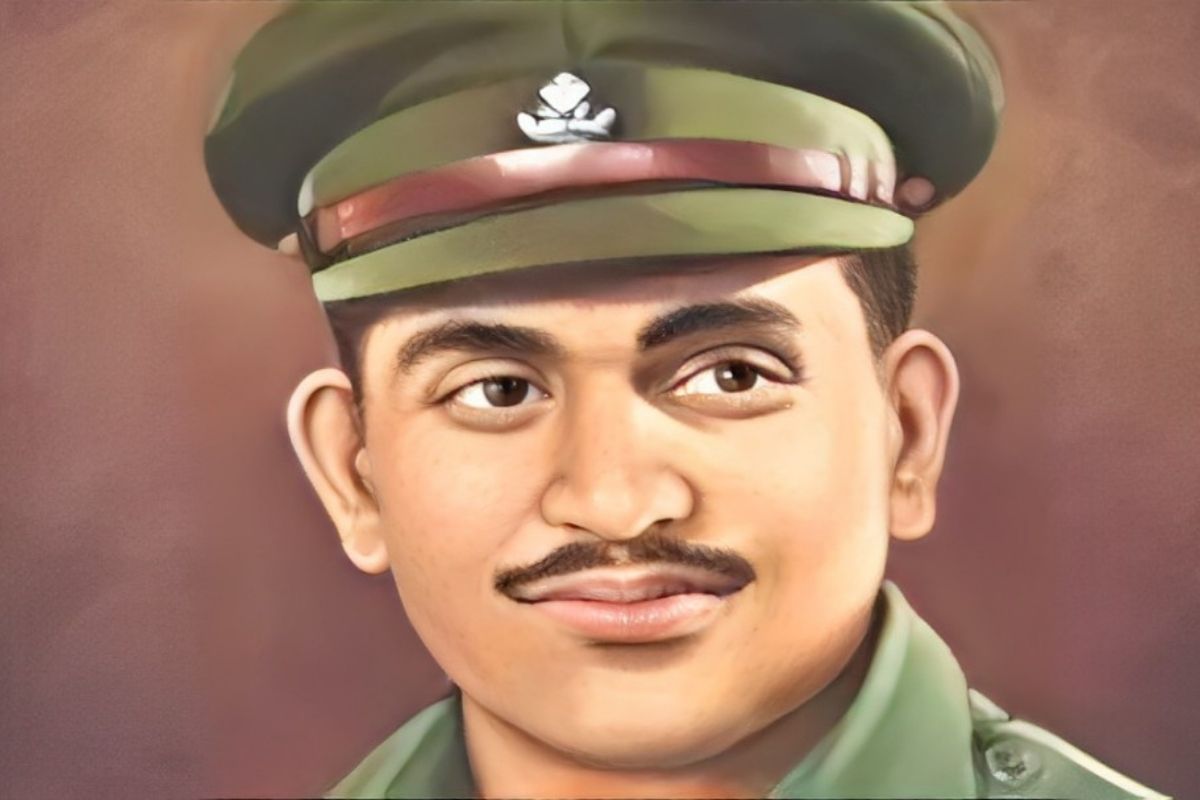
Although Major Sharma was killed in action, his bravery ensured the invaders were repelled, buying precious time for reinforcements to arrive. Besides recognizing his gallantry his posthumous PVC award shaped the benchmark of gallantry in the Indian military.
Notable Recipients of the Param Vir Chakra
Throughout the decades many soldiers have shown great valor in a bid to earn the PVC. Among them are:
Captain Vikram Batra
Recognized after his death for his efforts in the Kargil War (1999), Captain Batra bravely led his troops in Point 4875 to success. His famous line of “Yeh Dil Maange More,” summed him up perfectly.
Lance Naik Grenadier Yogendra Singh Yadav
Yadav, who received the PVC for his valor during the Kargil War, was only 19 years of age. Even though he had orders to evacuate due to high levels of injury to A Company he continued to block enemy bunkers thus ensuring the success of his battalion.
Flying Officer Nirmal Jit Singh Sekhon
Sekhon remains the only officer of the Indian Air Force to receive the PVC He flew his aircraft into the enemy amid barrage of anti aircraft fire, and shot down before dawn several Pakistani planes attacking his base during Indo Pakistani war of 1971.
Rifleman Sanjay Kumar
Rifleman Sanjay Kumar, from the 13 Jammu and Kashmir Rifles, was a brave soldier during an operation in the Mushkoh Valley on July 4, 1999. Despite being shot, he crawled towards the enemy bunker and attacked, killing three militants. For his courage, he was awarded the Param Vir Chakra. These recipients put me in mind of Indian soldiers and their strong resolution and loyalty towards their country.
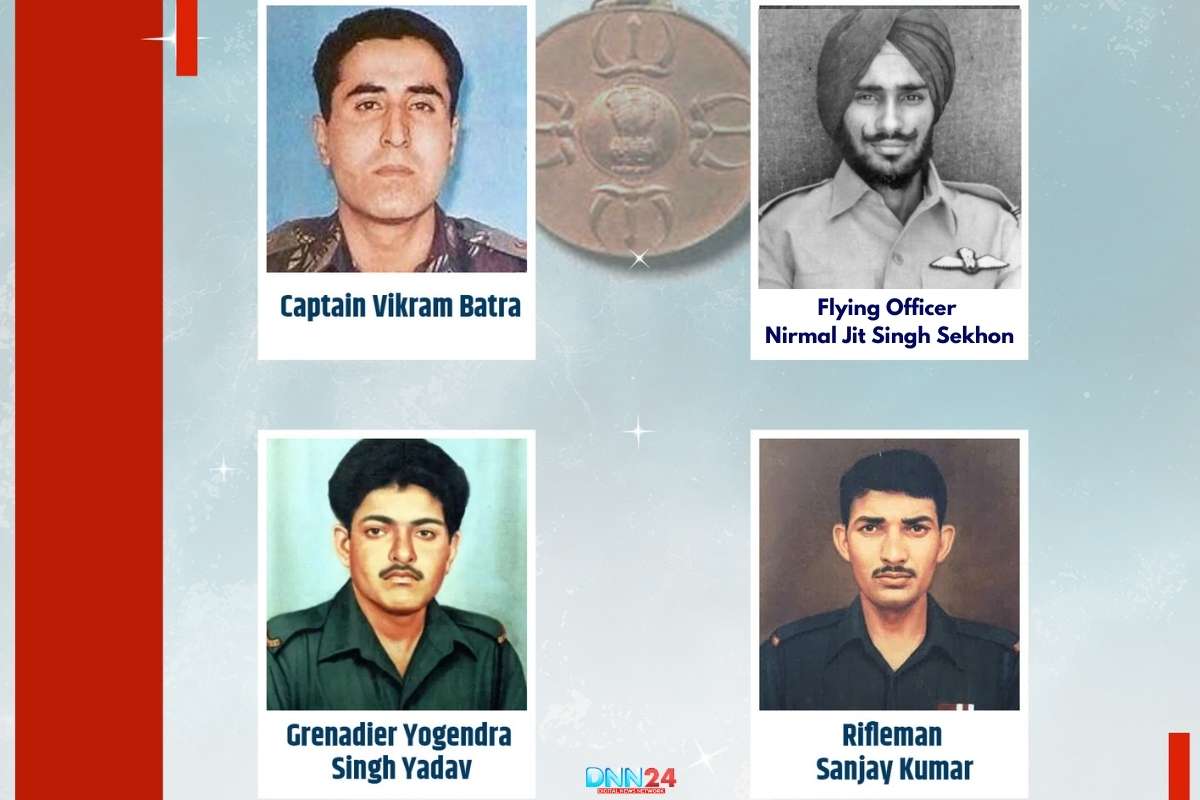
Nation’s Pride Param Vir Chakra Winners: Fighters who Faught For Nation and Sacrifice Themselves For Nation
| S.No | Name of the Param Vir Chakra Winner | Designation/Rank | Indian Army Regiment & Unit Name | Date and Place of Action | Name of the Battle/War/Conflict |
| 1 | Major Somnath Sharma | Major | 4th Battalion, Kumaon Regiment | 3 November 1947 in Badgam, Jammu & Kashmir (posthumous) | Battle of Badgam |
| 2 | Naik Jadunath Singh | Naik | 1st Battalion, Rajput Regiment | 6 February 1948 in Naushera, Jammu & Kashmir (posthumous) | Indo-Pakistani War in 1947 |
| 3 | Second Lieutenant Rama Raghoba Rane | Second Lieutenant | Bombay Sappers or Bombay Engineer Group | 8 April 1948 in Naushera, Jammu & Kashmir | Indo-Pakistani War in 1947 |
| 4 | Company Havildar Major Piru Singh Shekhawat | Company Havildar Major | 6th Battalion, Rajputana Rifles | 17 July 1948 in Tithwal, Jammu & Kashmir (posthumous) | Indo-Pakistani War in 1947 |
| 5 | Lance Naik Karam Singh | Lance Naik | Sikh Regiment | 13 October 1948 in Tithwal, Jammu & Kashmir | Indo-Pakistani War in 1947 |
| 6 | Captain Gurbachan Singh Salaria | Captain | 3/1 Gorkha Rifles | 5 December 1961 in Élisabethville, Katanga, Congo | Congo Crisis |
| 7 | Major Dhan Singh Thapa | Major | 8 Gorkha Rifles | 20 October 1962 in Ladakh, Jammu and Kashmir | Sino-Indian War |
| 8 | Subedar Joginder Singh | Subedar | 1st Battalion, Sikh Regiment | 23 October 1962 in Tongpen La, North-East Frontier Agency | Sino-Indian War |
| 9 | Major Shaitan Singh | Major | 13th Battalion, Kumaon Regiment | 18 November 1962 in Rezang La, Jammu and Kashmir (posthumous) | Sino-Indian War |
| 10 | Company Quarter Master Havildar Abdul Hamid | Company Quarter Master Havildar | 4th Battalion, The Grenadiers | 10 September 1965 in Khemkaran, India (posthumous) | Battle of Asal Uttar |
| 11 | Lt. Colonel Ardeshir Buzorji Tarapore | Lieutenant Colonel | 17th Poona Horse | 11 September 1965 in Phillora, Sialkot, Pakistan (posthumous) | Battle of Chawinda |
| 12 | Lance Naik Albert Ekka | Lance Naik | 14th Battalion, Brigade of the Guards | 3 December 1971 in Gangasagar, Agartala (posthumous) | Battle of Hilli |
| 13 | Flying Officer Nirmal Jit Singh Sekhon | Flying Officer | No.18 Squadron Indian Air Force | 14 December 1971 in Srinagar, Jammu and Kashmir (posthumous) | |
| 14 | 2/Lieutenant Arun Khetarpal | – Second Lieutenant | – 17 Poona Horse | – 16 December1971 in Barapind-Jarpal, Shakargarh, Pakistan (posthumous) | – Battle of Basantar |
| 15 | Major Hoshiar Singh Dahiya | – Major | – 3rd Battalion, The Grenadiers | – 17 December1971 in Basantar River, Shakargarh, Pakistan | – Battle of Basantar |
| 16 | Naib Subedar Bana Singh | – Naib Subedar | – Jammu and Kashmir Light Infantry | – 23 May1987 in Siachen Glacier, Jammu and Kashmir | – Operation Rajiv |
| 17 | Major Ramaswamy Parameshwaran | – Major | – 8th Battalion, Mahar Regiment | – 25 November1987 in Sri Lanka (posthumous) | – Operation Pawan |
| 18 | Lt. Manoj Kumar Pandey | – Lieutenant | – 1st Battalion,11th Gorkha Rifles | – 3 July1999 in Khaluber/Juber Top,Jammu and Kashmir (posthumous) | – Operation Vijay |
| 19 | Grenadier Yogendra Singh Yadav | – Grenadier | – 18th Battalion, The Grenadiers | – 4 July1999 in Tiger Hill,Jammu and Kashmir | – Battle of Tiger Hill |
| 20 | Rifleman Sanjay Kumar | – Rifleman | – 13th Battalion,Jammu and Kashmir Rifles | – 5 July1999 in Kargil,Jammu and Kashmir | – Kargil War |
| 21 | Captain Vikram Batra | – Captain | – 13th Battalion,Jammu and Kashmir Rifles | – 7 July1999 in Kargil,Jammu and Kashmir (Posthumous) | – Operation Vijay |
Criteria for Awarding the Param Vir Chakra
The Param Vir Chakra is awarded based on stringent criteria to ensure it reflects the highest degree of valor. Key requirements include:
Conspicuous Bravery: The act has to show finesse which involves exhibiting courage regardless of the prevailing circumstances.
Presence of Enemy: Bravery must occur during active combat, whether on land, sea, or air.
Posthumous Recognition: Many awards are given posthumously, acknowledging the ultimate sacrifice.
Inclusivity: Is available for all ranks and for all service disciplines including the nursing services and the reserve forces.
Every award recipient must pass through a strict assessment so that the medals’ actions match the medal itself.
Comparison of Gallantry Awards
The PVC is one of the highest military decorations in India. While it stands at the pinnacle, there are other notable awards:
Maha Vir Chakra (MVC): Second-highest wartime honor, awarded for significant bravery.
Vir Chakra (VrC): Coming third, for bravery in face of the enemy.
Ashoka Chakra: The honour equivalent to the PVC, awarded for bravery not in action.
These awards collectively ensure that bravery in both wartime and peacetime receives due recognition.
The Impact of the Param Vir Chakra
In its very existence, it symbolizes hope or motivation to the military and to civilians. The stories of its recipients are studied in classrooms, popular in cinema, and are often debated in public spheres, which inculcate patriotism and unity rights.
Beyond individual bravery, the PVC symbolizes the sacrifices necessary to uphold India’s sovereignty. It also helps to recall the work and the soul of the armed forces.
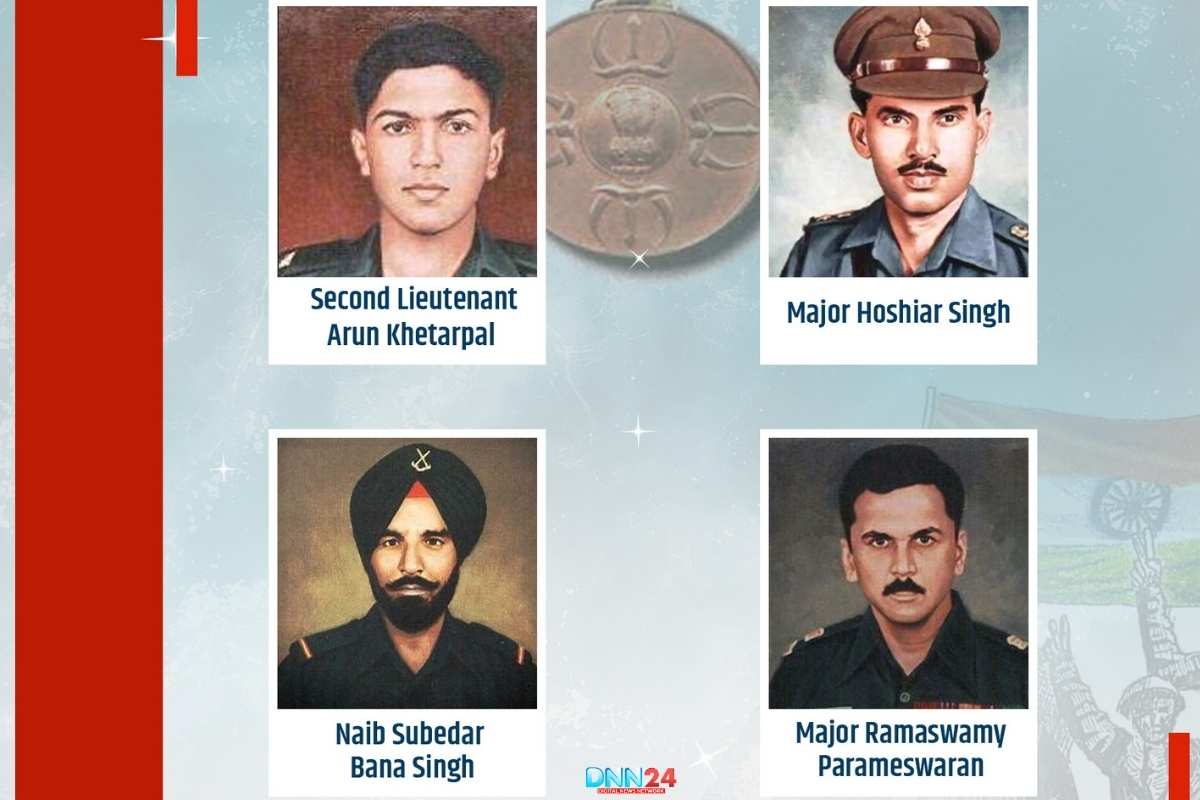
Global Comparisons
The PVC holds a unique place among military honors worldwide, comparable to:
Medal of Honor (USA): Recognizes unparalleled bravery in combat.
Victoria Cross (UK): This is for bravery in the face of the enemy.
The PVC is in a similar vein, but the fact that they are only granted to 21 people highlights how extraordinary the criteria in its awarding are.
Benefits for Recipients
PVC recipients and their families receive several benefits as a mark of gratitude, including:
Financial Allowances: Lifelong monetary support.
Housing and Land Grants: Resident free housing or land grant by the respective state governments.
Priority Services: Emerging roles and responsibilities for education and employment for family members.
These measures ensure recipients and their families are supported and honored for their sacrifices.
Legacy and Inspiration
The Param Vir Chakra is more than an award; it is a symbol of India’s enduring spirit. It encourages future generations to uphold values of bravery and patriotism. The action motivates not only soldiers, but also ordinary residents of the PVC recipients to contribute to the development of the nation.
Through history up to present day portrayal, the PVC always drums it into the minds of every citizen that freedom is expensive and such is paid by heroes who put country first.
Conclusion
The Param Vir Chakra stands as an eternal tribute to India’s bravest heroes. With every medal awarded, a legacy of courage and sacrifice is etched into the nation’s history. Warriors like Major Somnath Sharma, Captain Vikram Batra and Flying officer Sekhon and Many More Soldiers like them are the best of human being who are brave, dedicated and committed to their responsibility.
As we honor these legends, let us draw inspiration from their lives, ensuring their sacrifices are never forgotten. The Param Vir Chakra symbolizes the truest concept of serving one’s country to the book.
Also Read: Maha Kumbh Mela: A Grand Festival of Faith and Unity
You can connect with DNN24 on Facebook, Twitter, and Instagram and subscribe to our YouTube channel.

